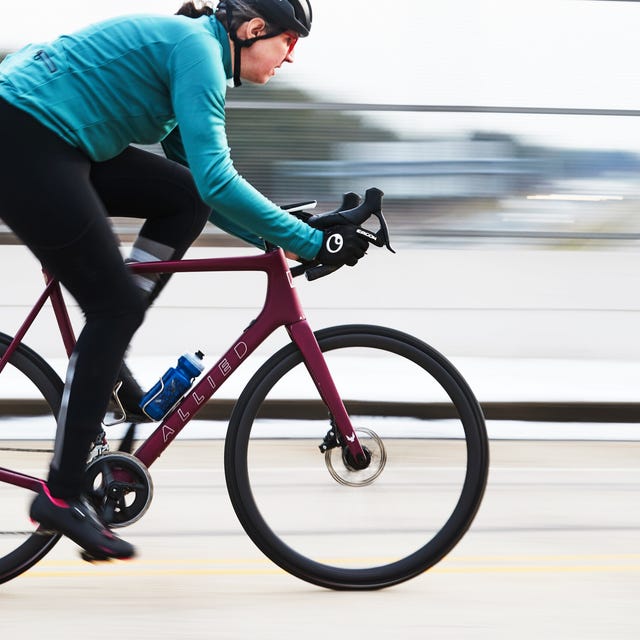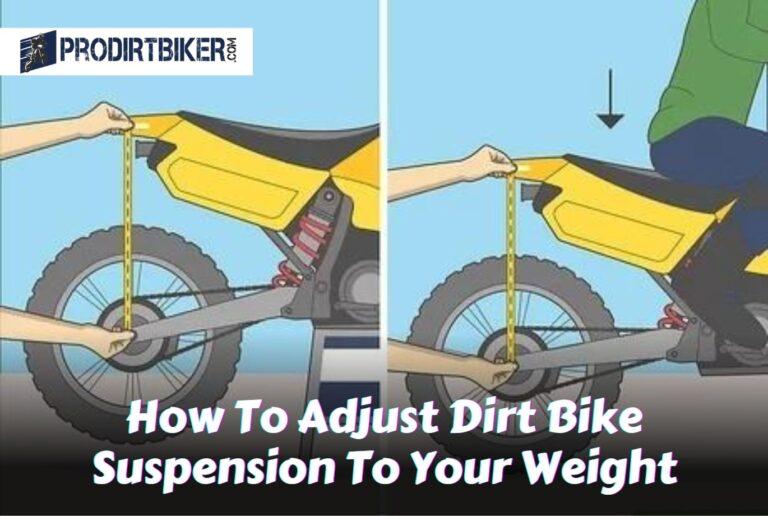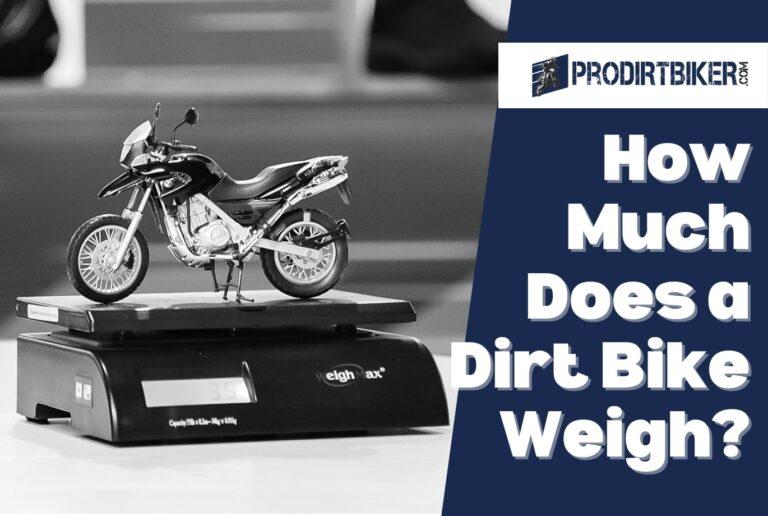How To Shift Gears On A Dirt Bike: Master Your Gear Shifting
To shift gears on a dirt bike, grip the clutch, use the gear selector to shift to the desired gear, feather the throttle, and slowly release the clutch.
Understanding Gear Shifting On A Dirt Bike
When it comes to riding a dirt bike, mastering the art of gear shifting is crucial for optimal performance. Whether you’re a beginner or an experienced rider, understanding how to shift gears properly can make a world of difference in your overall riding experience. In this section, we will delve into the various aspects of gear shifting on a dirt bike and explain why it is essential to master this skill. So let’s get started!
Introduction to gear shifting on a dirt bike
Gear shifting on a dirt bike involves the process of changing gears in order to adapt to different riding conditions. It enables riders to optimize their speed, control, and power output. Dirt bikes typically have a manual transmission, consisting of multiple gears, which riders shift using the gear lever.
In a manual transmission, the gears are arranged in a specific sequence known as the shift pattern. This pattern determines the order in which the gears are engaged. Different dirt bike models may have different shift patterns, so it’s important to refer to your bike’s user manual to understand the specific gear sequence.
Importance of mastering gear shifting for optimal performance
Mastering gear shifting on a dirt bike is crucial for several reasons. Firstly, it allows riders to maintain the most appropriate gear for the given riding conditions. Riding in the wrong gear can not only hinder performance but also put unnecessary strain on the engine and other components of the bike.
- Smooth gear shifting leads to better control and stability, especially when navigating through rough terrains or taking on challenging obstacles.
- Proper gear selection also ensures that the engine operates within its optimal powerband, maximizing acceleration and torque.
- Furthermore, understanding gear shifting helps to prevent engine stalls, as shifting to the appropriate gear at the right time keeps the engine running smoothly.
The role of the clutch in gear shifting
One critical component of gear shifting is the clutch. The clutch is a mechanism that helps disengage the engine from the transmission, allowing for smooth gear changes. It helps prevent grinding or jerking when shifting gears and ensures a seamless transition between different speed ranges.
When shifting gears, riders need to use the clutch in conjunction with the gear lever. Here’s a step-by-step breakdown of the gear shifting process with the clutch:
- First, pull in the clutch lever located on the left handlebar, disengaging the engine from the transmission.
- Next, use your left foot to operate the gear lever, moving it up or down according to the desired gear change.
- Once the gear lever is in the desired position, slowly release the clutch lever while simultaneously applying throttle with your right hand.
- This gradual release of the clutch allows for smooth engagement of the selected gear, ensuring a seamless transition.
Remember, when shifting up gears, always hold the clutch to prevent engine damage. However, when shifting down, you can release the clutch without holding it.
Understanding gear shifting and mastering the coordination between the clutch, throttle, and gear lever are key to becoming a skilled dirt bike rider. Practice your gear shifting techniques in a safe and controlled environment, gradually building your expertise. With time and experience, shifting gears on a dirt bike will become second nature, enhancing your riding performance and overall enjoyment.
Proper Gear Shifting Techniques For Beginners
Learning how to shift gears on a dirt bike is an essential skill that every beginner rider should master. Proper gear shifting techniques not only ensure a smooth and seamless ride but also contribute to the overall safety of your dirt bike experience. In this article, we will cover gear shifting basics for beginners, positioning your foot on the gear lever, and understanding the shift pattern on a dirt bike.
Gear Shifting Basics for Beginners
To shift gears on a dirt bike, it is important to start with the basics. Here are a few key points to keep in mind:
- Always make sure you are in a stable riding position before attempting to shift gears.
- Use the clutch lever to disengage the engine’s power when shifting gears.
- Gradually release the clutch lever while applying throttle to smoothly engage the next gear.
- Practice shifting gears in a controlled environment before taking your dirt bike on more challenging terrain.
Positioning your Foot on the Gear Lever
Proper foot positioning on the gear lever plays a crucial role in shifting gears effectively on a dirt bike. Follow these steps to ensure correct foot placement:
- While seated on your dirt bike, place your dominant foot on the footpeg.
- Slide the ball of your foot forward onto the gear lever.
- Keep your toes positioned under the gear lever so that you can easily apply pressure for shifting.
Understanding the Shift Pattern on a Dirt Bike
The shift pattern on a dirt bike is typically displayed on the gear shifter itself. It consists of a sequence of numbers and neutral positions, which allow you to shift up and down smoothly. Here’s a common shift pattern found on dirt bikes:
| 1st Gear | Neutral | 2nd Gear | 3rd Gear | 4th Gear | 5th Gear |
|---|---|---|---|---|---|
| ↓ | N | ↑ | ↑ | ↑ | ↑ |
To shift up to a higher gear, apply upward pressure on the gear lever. To shift down to a lower gear, apply downward pressure. Remember to always use the clutch when shifting gears.
By understanding the shift pattern and practicing proper gear shifting techniques, you’ll be able to navigate various terrains on your dirt bike with confidence and ease. Remember to practice regularly and gradually increase your speed and gear shifting skills.
Shifting Gears Without The Clutch: Advanced Technique
Shifting gears without the clutch is an advanced technique that can be incredibly helpful for dirt bike riders looking to enhance their riding experience. This technique allows you to change gears smoothly and quickly, improving your overall control of the bike. In this section, we will explore the advantages of shifting gears without the clutch, provide a step-by-step guide to mastering this technique, and share some tips to ensure you can confidently clutchless gear shift.
Advantages of shifting gears without the clutch
Shifting gears without using the clutch can provide several advantages for dirt bike riders. Here are a few key benefits:
- Faster gear changes: Shifting gears without the clutch enables quicker gear changes, allowing you to maintain momentum and speed through different terrains.
- Reduced wear and tear: The clutch mechanism undergoes significant wear and tear with frequent use, but clutchless gear shifting minimizes the strain on the clutch plates and other related components, potentially extending their lifespan.
- Smooth transitions: By mastering clutchless gear shifting, you can achieve smoother transitions between gears, resulting in a seamless and controlled riding experience.
Step-by-step guide to shifting gears without the clutch
Follow these steps to shift gears on a dirt bike without using the clutch:
- Prepare: Before shifting gears, ensure you are in the correct riding position and maintain a firm grip on the handlebars.
- Throttle control: Adjust the throttle to maintain a consistent speed while preparing for the gear shift.
- Foot placement: Position your foot under the shift lever, ready to apply pressure when needed.
- Preload the shifter: Apply upward pressure on the shift lever while gently rolling off the throttle.
- Releasing pressure: At the desired moment, release the pressure on the shift lever while simultaneously rolling back on the throttle.
- Engage the next gear: As you release the pressure on the shift lever, the transmission will automatically engage the next gear without the need for the clutch.
Tips for mastering clutchless gear shifting
Here are a few essential tips to help you master the clutchless gear shifting technique:
- Practice: As with any new skill, regular practice is key to developing proficiency. Find a suitable open area or practice track where you can safely practice clutchless gear shifting.
- Smooth movements: Focus on making smooth and controlled movements with your foot when applying pressure on the shift lever and releasing it.
- Timing is crucial: Pay attention to the timing of your gear shifts. Timing the release of pressure on the shift lever and adjusting the throttle play an essential role in achieving smooth gear transitions.
- Gradual progression: Start with lower gears before attempting to shift to higher gears without the clutch. This will help you get comfortable with the technique and build your confidence gradually.
By successfully mastering clutchless gear shifting, you can enhance your dirt bike riding experience, improving your control and overall performance. Remember to always practice in safe environments and gradually advance your skills to ensure a smooth transition to this advanced technique.
Maintaining Control And Timing In Gear Shifting
Importance of Foot Position While Shifting Gears
When shifting gears on a dirt bike, having the correct foot position is essential for maintaining control and executing smooth gear transitions. Your feet should be positioned on the footpegs, with the balls of your feet resting firmly on the pegs. This position allows you to exert optimal control over the bike while shifting gears, ensuring that your feet do not slip off the pegs during the process.
Timing Your Gear Shifts for Smooth Transitions
Timing is everything when it comes to shifting gears on a dirt bike. To achieve smooth transitions between gears, it’s crucial to time your gear shifts correctly. As you accelerate, pay attention to your engine’s RPM (Revolutions Per Minute) and listen for the engine’s sound. When the engine reaches its peak power band, it’s time to shift up to a higher gear. Conversely, when the engine starts to bog down or lose power, it’s time to shift down to a lower gear. Timing your shifts based on the engine’s RPM and sound will ensure seamless gear changes and prevent unnecessary strain on the engine.
Common Mistakes to Avoid When Shifting Gears
When shifting gears on a dirt bike, there are a few common mistakes that riders should avoid to maintain control and prevent damage to the bike. One mistake is shifting gears too early or too late. Shifting too early can result in the bike losing momentum, while shifting too late can put unnecessary strain on the engine and cause it to stall. Another mistake is not fully engaging the clutch lever before attempting to shift. Failing to fully disengage the clutch can lead to rough gear changes and potential damage to the transmission. Lastly, riders should avoid stomping on the gear shifter when shifting. Instead, use a smooth and deliberate motion to shift gears, avoiding excessive force that can potentially damage the shifter mechanism.
Advanced Gear Shifting Techniques: Mastering The Clutch
Mastering the clutch is essential for advanced gear shifting techniques on a dirt bike. Whether you’re hitting the motocross track or exploring rugged trails, understanding the role of the clutch and knowing how to control it properly will ensure seamless gear shifts. In this article, we’ll delve into the intricacies of the clutch and provide valuable tips for mastering clutch modulation in different riding situations.
The role of the clutch in gear shifting
The clutch plays a crucial role in gear shifting on a dirt bike. It is responsible for disengaging the engine power from the transmission, allowing you to shift gears smoothly. When you pull in the clutch lever, you temporarily interrupt the power flow to the rear wheel, enabling you to shift gears without causing damage to the transmission or experiencing jolts. The clutch essentially serves as a mediator between the engine and the transmission, facilitating gear changes with precision and control.
Proper clutch control for seamless gear shifts
To ensure seamless gear shifts, it’s important to have proper clutch control. Here are some key tips:
- When shifting up, always pull in the clutch lever completely using your fingers, while simultaneously rolling off the throttle.
- With the clutch lever fully engaged, use your foot to shift up to the next gear by applying upward pressure on the shift lever.
- Release the clutch smoothly and gradually while simultaneously rolling back on the throttle, allowing the engine to regain power and transfer it to the rear wheel in the new gear.
- When shifting down, follow the same process but remember to blip the throttle slightly while releasing the clutch. This technique helps match the engine speed to the lower gear, preventing any unwanted jerks or stalls.
Mastering clutch modulation for different riding situations
Mastering clutch modulation is crucial for adapting to different riding situations. Here are some tips to consider:
- In low-traction situations, such as riding on slippery or muddy surfaces, feathering the clutch can help maintain control and prevent excessive wheel spin.
- When navigating tight corners or technical terrain, you can modulate the clutch to keep the engine in the optimal power band, allowing for better acceleration and control.
- For quick bursts of acceleration, such as when clearing jumps or overtaking obstacles, quickly engaging and disengaging the clutch can provide an instant power boost.
- Practice clutch modulation in various riding scenarios to develop a feel for when to engage or disengage it for maximum control and efficiency.
By mastering the clutch and understanding its role in gear shifting, you can take your dirt biking skills to the next level. Remember to practice proper clutch control and modulation in different riding situations for seamless gear shifts and improved overall performance on the dirt bike. With time and experience, you’ll become adept at using the clutch as a tool to enhance your riding abilities.
Special Considerations And Tips For Gear Shifting On Different Dirt Bike Brands
Gear Shifting Techniques Specific to Yamaha Dirt Bikes
When it comes to gear shifting on Yamaha dirt bikes, there are a few special considerations and techniques to keep in mind. Yamaha dirt bikes have a reputation for their smooth transmission and responsive performance. To make the most out of your Yamaha dirt bike’s gear shifting, follow these tips: 1. Use the clutch: Although Yamaha dirt bikes are known for their smooth shifting, using the clutch is still essential for seamless gear changes. When shifting up, pull in the clutch lever with your left hand while rolling off the throttle. Simultaneously, use your left foot to shift up using the gear lever. Release the clutch gradually and accelerate smoothly to ensure a smooth transition into the higher gear. 2. Timing is key: Timing your gear shifts is crucial for maximizing power and maintaining control. For smooth gear shifts on a Yamaha dirt bike, make sure to shift when the engine is in its optimal RPM range. This will vary depending on the model, but generally, shifting up around the mid to high RPM range will provide the best results. 3. Practice makes perfect: Each Yamaha dirt bike may have a slightly different gear shifting feel, so it’s important to spend some time getting familiar with the gear lever’s position and the clutch’s bite point. Practice shifting up and down through the gears in a controlled environment to develop muscle memory and improve your shifting technique.Best Practices for Gear Shifting on Honda Dirt Bikes
Honda dirt bikes are known for their smooth power delivery and reliable performance. To ensure smooth and efficient gear shifting on your Honda dirt bike, follow these best practices: 1. Use the clutch: Just like on Yamaha dirt bikes, using the clutch is crucial for smooth gear shifting on Honda dirt bikes. When shifting up, pull in the clutch lever with your left hand while rolling off the throttle. Use your left foot to shift up using the gear lever, and release the clutch gradually while maintaining consistent throttle control. 2. Find the sweet spot: Honda dirt bikes often have a specific RPM range where the engine performs optimally. Experiment with shifting up and down within this sweet spot to find the perfect balance between power and control. Shifting too early or too late can result in a loss of momentum or excessive strain on the engine. 3. Be gentle with the shift lever: Honda dirt bikes typically have a precise and smooth shifting mechanism. Treat the shift lever with care and avoid forcing it into gear. Instead, apply gentle pressure and let the transmission engage naturally. This will help prevent any damage to the shifting mechanism and promote smooth gear changes.Tips for Gear Shifting on Other Popular Dirt Bike Brands
In addition to Yamaha and Honda, there are many other popular dirt bike brands with their unique gear shifting characteristics. Here are some general tips that can be applied to gear shifting on other popular dirt bike brands: 1. Familiarize yourself with the bike’s manual: Each dirt bike brand may have specific gear shifting instructions and recommendations outlined in its manual. Take the time to read the manual thoroughly and understand the manufacturer’s guidelines for optimal gear shifting techniques. 2. Practice with different bikes: If you have the opportunity, try riding different dirt bike brands to experience the variations in gear shifting mechanisms and performance. This will help you adapt your shifting technique to different bikes and become a more versatile rider. 3. Listen to the engine: Pay attention to your bike’s engine sound and feel while shifting gears. Each bike brand has its unique engine characteristics and vibrations, which can serve as valuable cues for timing your shifts. Develop a good sense of the engine’s rhythm and respond accordingly for smooth and efficient gear changes. Remember, mastering gear shifting techniques takes practice and familiarity with your specific dirt bike brand. Take the time to experiment, practice, and continuously improve your shifting skills to enhance your overall riding experience.Troubleshooting Gear Shifting Issues
Identifying common gear shifting problems
When it comes to dirt bike riding, shifting gears smoothly is an essential skill. However, there are times when you may encounter gear shifting issues that can make your ride less enjoyable. It’s important to identify these common problems to ensure a seamless and safe riding experience. Here are a few issues you may encounter:
- Difficulty shifting gears up or down
- Gear slippage during acceleration or deceleration
- Unusual grinding or clunking noises while shifting
- Gear lever feels loose or unresponsive
By recognizing these issues, you can quickly diagnose and address any gear shifting problems you may encounter.
Diagnosing and fixing gear shifting issues
Diagnosing the root cause of your dirt bike’s gear shifting issues is crucial to effectively fixing them. Here’s a step-by-step guide to help you diagnose and resolve common gear shifting problems:
- Check clutch cable tension: A loose or improperly adjusted clutch cable can cause difficulty in shifting gears. Ensure that the clutch cable has the correct tension and adjust it if necessary.
- Inspect gear shift linkage: Examine the gear shift linkage for any damage or misalignment. Make sure it is properly connected and lubricated.
- Check transmission oil: Insufficient or contaminated transmission oil can affect gear shifting performance. Check the oil level and quality, and change it if necessary.
- Inspect clutch plates and springs: Worn or damaged clutch plates and springs can cause gear slippage or difficulty in shifting. Replace any worn-out components.
- Adjust gear shift lever position: Ensure that the gear shift lever is positioned correctly. It should be at a comfortable height and angle to allow smooth shifting.
- Check for bent or damaged gear parts: Inspect the gear shifter, gears, and other relevant parts for any signs of bending or damage. Replace any faulty components.
By following these steps, you should be able to diagnose and fix common gear shifting issues on your dirt bike.
Tips for maintaining a properly functioning gear system
Maintaining a properly functioning gear system on your dirt bike is essential for a smooth and enjoyable ride. Here are a few tips to help you keep your gear system in top shape:
- Regularly check and change transmission oil: Ensure that the transmission oil is at the correct level and of high quality. Regularly change the oil as recommended by the manufacturer.
- Keep the gear shift linkage lubricated: Apply lubricant to the gear shift linkage periodically to reduce friction and ensure smooth shifting.
- Inspect clutch cable and adjust as needed: Regularly check the clutch cable tension and adjust it if necessary. A properly adjusted clutch cable ensures smooth gear shifting.
- Stay consistent with maintenance intervals: Follow the manufacturer’s recommended maintenance schedule for your dirt bike. Regularly inspect and service your bike to prevent potential gear shifting problems.
- Practice proper shifting technique: Learn and practice proper shifting technique to minimize strain on your gear system. Avoid aggressive shifting and ensure you fully engage the clutch before shifting gears.
By following these maintenance tips, you can prolong the life of your gear system and enjoy a seamless riding experience on your dirt bike.

Credit: www.bicycling.com
Frequently Asked Questions On How To Shift Gears On A Dirt Bike
What Is The Shifting Pattern For A Dirt Bike?
To shift gears on a dirt bike, pull the clutch and step on the shift pedal to shift up. Release the clutch and give the bike some gas. When shifting down, you don’t need to hold the clutch. Remember to shift smoothly and maintain control of the bike.
Do You Hold Clutch While Shifting On A Dirt Bike?
Yes, it is necessary to hold the clutch while shifting on a dirt bike. When shifting up, always hold the clutch and release it while giving the bike some gas. When shifting down, you do not need to hold the clutch.
How Do You Shift Down A Dirt Bike?
To shift down a dirt bike, follow these steps: 1. Pull in the clutch lever with your left hand. 2. Use your left foot to press down on the gear shift lever to engage a lower gear. 3. Gradually release the clutch lever and apply throttle as needed.
Remember to hold the clutch when shifting up but not when shifting down.
How Do You Shift A 6 Speed Dirt Bike?
To shift a 6-speed dirt bike, pull in the clutch, use the gear selector to shift to the desired gear, release the clutch slowly while giving the bike some gas. Hold the clutch when shifting up, but not when shifting down.
Practice proper timing and foot position for smooth shifts.
Q: What Is The Shifting Pattern For A Dirt Bike?
A: The shifting pattern for a dirt bike is typically a 1-down, 4-up pattern, where you shift down to go into first gear and shift up to go into the higher gears.
Conclusion
Mastering the art of shifting gears on a dirt bike is essential for a smooth and exhilarating ride. By understanding the proper techniques and practicing regularly, you can confidently navigate various terrains with ease. Remember to grip the clutch, use the gear selector to shift, feather the throttle, and release the clutch gradually.
With these steps in mind, you’ll be able to shift gears like a pro and enhance your dirt bike riding experience. So, gear up and get ready for an adventure-filled ride!





